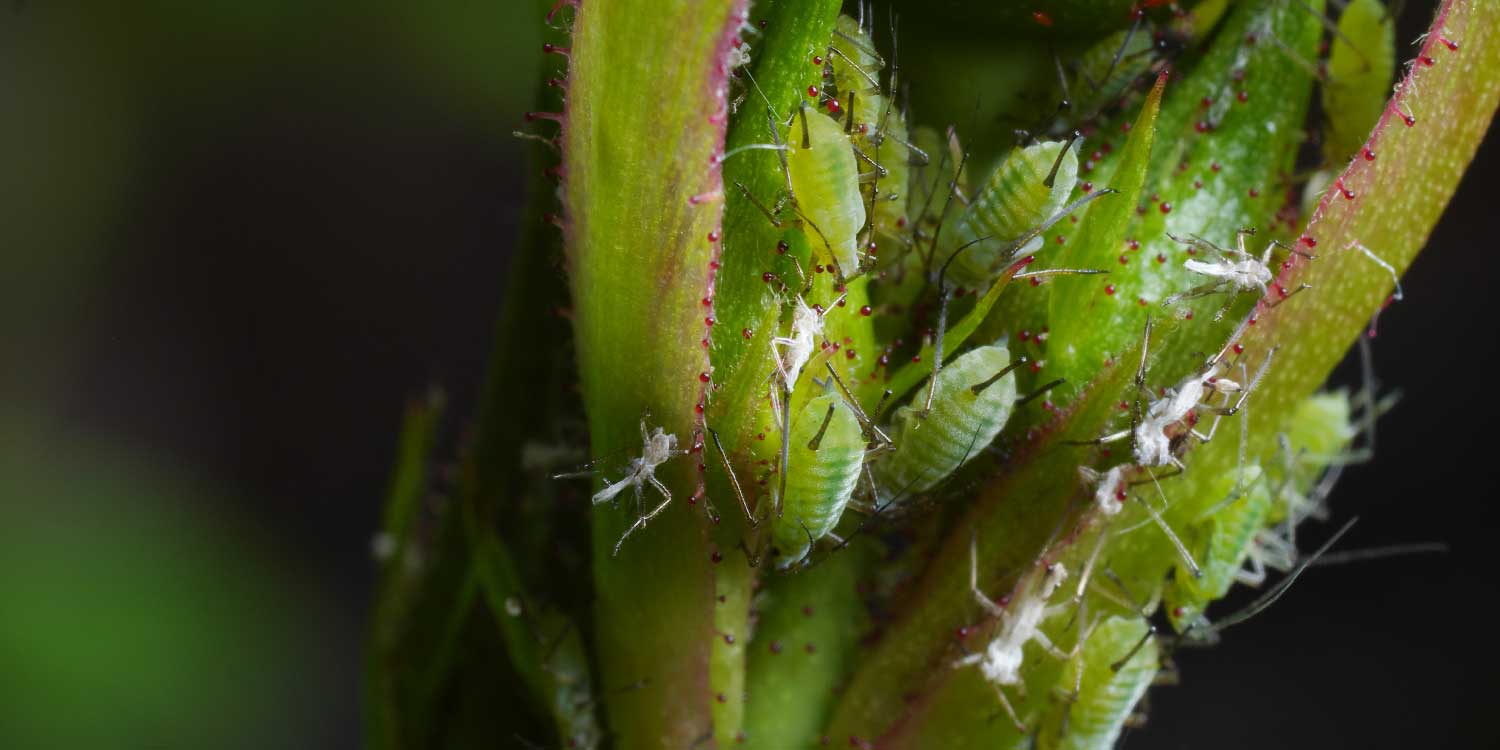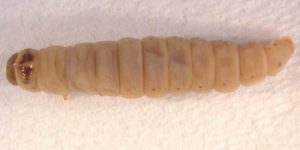Rose aphids, also known as greenfly or blackfly are sap-sucking tiny pear-shaped insects with slender legs that live in colonies on the underside of rose bush leaves and flower buds.
They reproduce very fast, leading to massive infestations and entirely covering new shoots if left untreated. This can cause serious damage to the crop.
Some aphids also carry rose mosaic virus, which causes bleaching and spotting on rose leaves.
BIOLOGY
Aphids have an incomplete metamorphosis, there being no pupal stage but a series of moults in which the nymph gradually becomes a mature adult. As a result white cast aphid skins are often seen on infested flower buds and leaves.
They reproduce asexually and sexually, generally producing more female aphids throughout the season.
When the weather is warm, they can develop from new born nymphs to reproducing adults in 7-8 days, and because each adult can produce up to 80 offsprings in a week’s time, aphid populations can increase with great speed if left unhindered.
They usually overwinter on rose bushes as eggs laid on the stems in the previous season. However, in sheltered places there may be active nymphs and adults all year round.
Adults are usually wingless, but can develop a winged form seasonally or when populations become crowded, so that when food quality suffers, the insects can travel to other plants, reproduce, and start a new colony.
DAMAGE
Aphids have piercing and sucking mouthparts which they use for feeding.
The nymphs and adults feed on rose plant juices, attacking leaves, stems, buds and flowers. They mostly like the succulent new growth.
Their feeding cause misshapen, curling or stunted new growth and leaves partly by the excessive removal of food that would otherwise pass to the growing leaves and partly by the digestive action of the saliva injected into the leaf or bud.
Attacked leaves, stems and flower buds are often covered with a sticky substance called honeydew. This sugary liquid produced by the insects as waste, usually attracts other insects like ants, which gather the substance for food. The honeydew can also develop a fungal growth called sooty mold, causing branches and leaves to appear black. If left unchecked, the sooty mold greatly reduces the plants ability to photosynthesize.
White cast aphid skins are often seen on infested flower buds and leaves
MANAGEMENT
The method chosen to manage rose aphids depends on the degree of infestation.
Chemical method
The following insecticides are recommended for use in the management of rose aphids;
- KINGCODE ELITE 50EC (10ml in 20Litres water)
- AMAZING TOP 100WDG (5g in 20Litres of water)
- EPITOME ELITE 500SP (10g in 20Litres of water)
- TAURUS 500SP (10g in 20Litres of water)
- LEXUS 247SC (8ml in 20Litres of water)
- PROFILE 440EC (30ml in 20Litres of water)
- DEFENDER 25EC (40ml in 20Litres of water)
- TORNADO 900SP (10g in 20Litres of water)
- PENTAGON 50EC (10ml in 20Litres of water)
Non-chemical methods
- Use natural enemies (predators) like ladybirds, hoverfly larvae, lacewing larvae and several species of parasitic wasps.
- Practise rotations with non-host plants
- Ensure proper weed control
- Maintain field hygiene/ sanitation
- Plant resistant varieties
Tips!
- Use JAMBO CLEAN to clean the sooty mold.
- Whenever doing foliar sprays, mix the insecticide with INTEGRA 3ml/20l, which is a sticker, spreader, and penetrant that improves the efficacy of the chemical.
- Alternate several insecticides to prevent the pest from developing resistance to either of the chemicals.
- Timely management of the pest is very critical.






